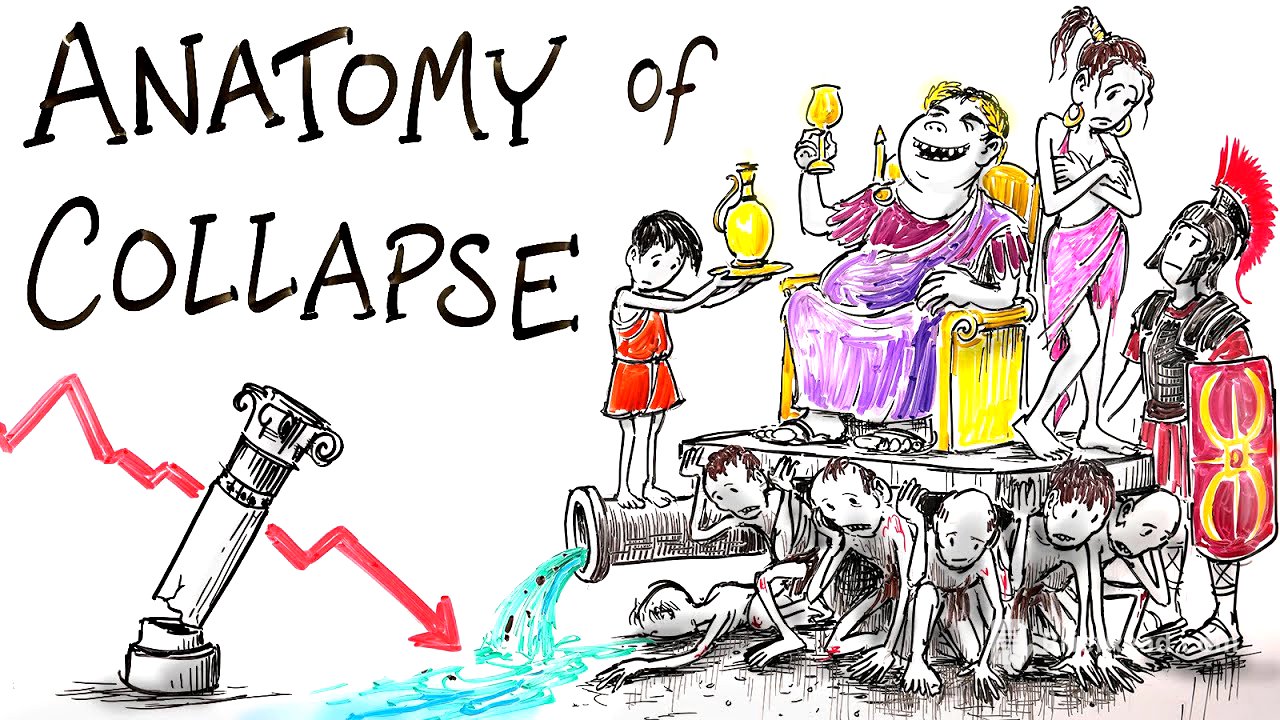TLDR;
This video explores the complex question of when and why the Roman Empire fell, a topic debated by historians for centuries. It examines various proposed dates, ranging from 31 BC to 1917, and delves into numerous explanations for the empire's decline, including barbarian invasions, economic factors, the rise of Christianity, environmental changes, and moral decay. The video also challenges the traditional narrative of decline, highlighting cultural growth and innovation during the period. The speaker concludes that there is no single right answer and that the fall of Rome was likely due to a confluence of factors, personally favouring AD 1453, the fall of Constantinople, as the definitive end.
- Multiple dates and reasons exist for the fall of the Roman Empire.
- Barbarian invasions, economic issues, Christianity's rise, and environmental changes are key factors.
- The traditional view of decline is challenged by cultural growth and innovation.
Introduction: The Enduring Questions of Rome's Fall [0:00]
The video introduces two fundamental questions in history: when and why did the Roman Empire fall? These questions have been extensively debated, with numerous answers proposed over the centuries. One German scholar even compiled an alphabetical list of 210 possible causes, highlighting the complexity of the issue. Given the significant influence of Roman civilisation on modern language, law, architecture, government, and religion, examining the proposed dates and causes for Rome's fall is worthwhile.
Proposed Dates for the Fall of Rome [1:17]
Several dates have been suggested for the fall of Rome, starting with 31 BC and the Battle of Actium, which marked the beginning of the end for the Roman Republic and the rise of the empire under Augustus. However, most historians agree that Roman civilisation continued to thrive, reaching its peak during the 2nd century AD under the five good emperors. Another frequently cited date is 180 AD, the death of Marcus Aurelius and the ascension of Commodus, marking a transition from Rome's golden age to a period of internal and external challenges. This date is popularised by films like "The Fall of the Roman Empire" and "Gladiator".
Later Dates and the Division of the Empire [3:21]
The beginning of the 4th century AD, marked by civil wars and Constantine's conversion to Christianity, is another proposed date. Some argue that Christianity's inward focus undermined Roman civic values. The 4th and 5th centuries saw invasions by barbarian tribes, with the Battle of Adrianople in 378 AD and the sack of Rome by the Visigoths in 410 AD being significant events. The sack of Rome by the Vandals in 455 AD and the deposition of Romulus Augustus in 476 AD are also considered. The Eastern Roman Empire, or Byzantine Empire, continued until 1453 when Constantinople fell to the Ottoman Turks, leading some to argue that Rome didn't fall until then.
The Shifting Definition of "Roman" [5:10]
The video addresses the difficulty in defining who counts as a "real Roman," noting that the Roman army and Senate were composed of people from various regions, including Italy, Europe, Africa, and the Middle East. The empire's strength lay in its ability to incorporate and Romanise foreigners. The Eastern Roman Empire's survival until 1453 further complicates the question of when Rome fell, as the Byzantines considered themselves Romans. The video also explores later claims of Roman legacy, such as Charlemagne's coronation in 800 AD and the Russian Tsars' claim to the Roman title of Caesar, extending potential dates for Rome's fall to 1806 and 1917, respectively.
Explanations for Rome's Downfall: Barbarian Invasions and Economic Factors [9:09]
Turning to the reasons for Rome's decline, the video examines several influential explanations. One prominent theory attributes Rome's fall to barbarian invasions, with some historians arguing that the empire was essentially sound but overwhelmed by repeated attacks. Edward Gibbon also emphasised this factor. Other explanations focus on economic circumstances, such as declining arable land, reduced tax revenue, soil exhaustion, growing inequality, and economic stagnation due to reliance on slave labour. The later Roman Empire experienced severe economic crises, including inflation and currency debasement, exacerbated by barbarian incursions and civil wars.
The Role of Christianity and Biological Models [12:09]
Another explanation suggests that the rise of Christianity contributed to Rome's decline. The church acquired land and resources, reducing those available to the state, and the monastic movement diverted labour. Psychologically, Christianity's emphasis on the afterlife may have undermined traditional Roman values of civic service. Christianity also presented an alternative power structure and value system. Some historians propose a biological model, suggesting that nations, like individuals, inevitably go through cycles of birth, growth, maturity, decline, and death.
Debunking Oversimplified Explanations: Lead Poisoning and Moral Degeneracy [13:46]
The video addresses and debunks some oversimplified explanations for Rome's fall, such as lead poisoning from water pipes and moral degeneracy. Lead pipes were used throughout Roman history, including during its rise and peak, making it an unlikely cause of decline. The notion of moral decay, popularised by Victorian authors and Hollywood films, is also challenged. The behaviour of a few emperors like Caligula, Nero, and Commodus is not representative of the entire population, and lurid anecdotes date to the early empire rather than its decline.
Re-evaluating Moral Decline and Environmental Factors [16:56]
The existence of slavery is dismissed as a unique cause of moral decay, as it was common in many ancient societies and most prevalent during Rome's growth. In fact, institutions like slavery and gladiator games were declining during Rome's fall. Environmental factors have gained prominence in recent years, with some arguing that Rome's rise coincided with a period of warm, wet, and stable climate known as the Roman climate optimum. Around 150 AD, conditions became unstable, leading to agricultural decline, epidemics, and a late Roman little ice age in the 5th century AD.
Challenging the Narrative of Decline: Growth and Innovation [19:45]
The video questions whether the right questions are being asked, challenging the assumption that the era was one of pure decline. The arrival of barbarian tribes was not a simple replacement of one culture by another, as they were influenced by Roman civilisation. Political structures and institutions endured, and Latin and Greek remained vital languages. The division between Roman and barbarian was often blurred, with many barbarians fighting for Rome and holding Roman titles. Some historians highlight cultural growth and innovation, particularly in religious and intellectual history, during the period between 300 and 700 AD.
The Birth of New Religions and Social Forms [22:10]
This era saw the dominance of Christianity and the development of key doctrines by thinkers like Origen, Eusebius, Augustine, Jerome, and Ambrose. Important religious phenomena such as the monastic movement and the cult of saints also arose. Islam was established and spread during this period as well. Therefore, despite political and economic disruption, new religions, states, and social forms emerged, laying the foundations for the modern world. The video suggests that the traditional interpretation of decline and the emphasis on growth and innovation may not be irreconcilable, depending on whether one focuses on economic prosperity or spirituality.
Conclusion: A Multifaceted Perspective on Rome's Fall [24:40]
The debates about when, why, and even if the Roman Empire ended demonstrate the complexities of conceiving history. There is a tendency to neatly divide the past into separate epochs, leading to oversimplifications. The speaker believes there is no single right answer to when and why Rome fell, as it depends on specific aspects of history and culture. The fall of Rome was likely due to a confluence of factors rather than a single cause. If forced to choose one date, the speaker would pick 1453 AD, the conquest of Constantinople by the Turks, viewing the Byzantine Empire as a legitimate branch of Roman civilisation. The video concludes by suggesting that a more important question is how Rome managed to last so long, and encourages viewers to learn about the past to better understand the present.









